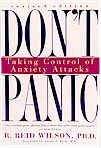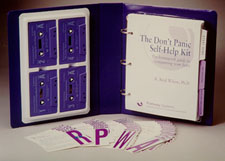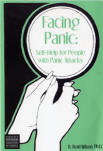As Children proceed through the elementary grades, some class and home assignments will gradually begin to involve creative writing-first sentences, then paragraphs, and finally short essays. It is possible that these assignments will be difficult for some children, and there is a good reason for this. Comparatively little creative writing is required of youngsters in the primary grades. Mostly they we asked simply to read and fill in the blanks. Then suddenly this neglected skill becomes a very important component of assignments in the upper elementary grades.
Creative writing assignments require a lot of time, not only from the student but from the teacher as well, who must grade for content, grammar, spelling, and punctuation. No teacher enjoys returning a composition filled with red marks. Consequently, most teachers would welcome help from parents even if it only involves increasing the student's output. (If it can also increase the quality of the youngster's writing, so much the better!) Therefore, if it is all right with your child and if he seems to be having a problem with composition, you may want to consider getting in touch with his teacher to learn what she will be requiring in terms of creative writing assignments and how you might best help.
Somehow the child's cooperation win have to be secured, for writing tends to be tedious for some youngsters and cannot be accomplished- without a positive attitude. This can best be done by (1) defining the goal ("We're going to work together to help you learn how to better express your thoughts in writing."); (2) scheduling only one or two writing sessions per week, preferably at a time when the youngster is not already exhausted or burned out with other assignments; (3) keeping the sessions to a reasonable length, thereby preventing frustration brought on by fatigue.
Of course, it is possible that maintaining a regular schedule for creative writing will not be necessary, and a blanket offer that help is available if needed is all that is required. You may want to request that the teacher send all compositions home so that you can see if the child is keeping on top of this important aspect of the curriculum.
Materials
A "first-aid" kit of writing materials will circumvent many a crisis. Be sure that there is always a supply of notebook paper, pencils, and ballpoint pens on hand (in case these essentials have been left at school). A paperback edition of a good dictionary written at the child's reading level is also a necessity, and eventually a thesaurus will become a valuable tool for creative writing assignments.
Letter Writing
Letter writing seems a chore for many people, and yet a certain amount of correspondence is a necessity in everyone's life, and the sooner the child becomes aware of this social obligation, the better. Almost by definition, thank-you notes are generally short and their content follows a prescribed format. However, merely "thank you for your gift" seems insufficient. The recipient needs to identify the gift and graciously explain why it will give him pleasure. ("Thank you for the pretty sweater. It will go perfectly with my favorite shirt.") A note of caution: thank-you notes should be written within 48 hours of the receipt of a gift, for somehow the longer this is put off, the more difficult the task will be. Try to set a deadline without seeming to nag-something like, "Set aside a few minutes tonight to write Aunt Jane a thank-you note so that I can drop it off at the Post Office in the morning when I run errands."
Find out who those individuals are in your child's life that are important. Your child may balk at writing a letter to Aunt Jane, but trip over himself to write a letter to a favorite coach or previous teacher. (And, yes, pull some strings. Let that person know that a return letter would be mighty important and that some praise and interest shown your child would go a long, long way.)
The youngster can be encouraged to write other kinds of letters as well-a fan letter to a favorite rock star, a contest letter (25 words or less--good mental discipline), a letter of request ("Will you send me a free copy of the poster that was advertised in?").
A number of children's magazines promote pen pals with children in our own country and in other countries. Your children's librarian may be helpful in locating these.
Unblocking a Block
Often, the basis of the problem is quickly identified when the child groans, "I've got to write a composition for school tomorrow, and I don't know WHAT to write about!" It's a common complaint and deserves sympathy and some specifics by the parent-not to provide a topic but to trigger the youngster's imagination and creative abilities.
Try asking questions. For example, "Can you think of anything interesting that happened to you on the camping trip?" or "Is there a favorite person (or place or film, et cetera) in your life you'd like to write about?" or "Is there a famous person you'd like to be? Why? The important point to note here is that all of the above questions relate directly to the child himself, who is probably going through the very normal developmental stage of egocentricity. To most youngsters, they are the most fascinating subject in the world at this time of their young lives. This, too, will pass, but while it exists, we can capitalize on it.
Suggest that the child thumb through a well-illustrated magazine or book in his search for an idea. Newspapers are another good source-what better topic than to write about one's favorite comic strip? However, if the illustrations are accompanied by a printed text, die youngster should be cautioned against copying from the text as opposed to merely using it for background information.
The family picture album may touch off some fond memories that will make a colorful composition. Help die young writer to notice details in photographs-"Wasn't that the day it poured right in the middle of our picnic?" "Look! There you are getting on the bus for your first year at camp."
Try fantasy. For example, "What three things would you like to have with you if you were marooned on a desert island?" or "If you had to exist in a strange city for three days with no job, no friends, and no money, what would you do?" or, who would you choose as famous parents-or sisters-or brothers?"
General Tips
Try to encourage the young writer to see a picture in his mind of what he plans to write about. Let him close his eyes and describe the picture to you. Ask questions about it. His verbal description will help him organize his thoughts to be transferred onto paper.
Play word games. For example, if the word "red" occurs in his writing, ask him how many other words he can think of that describe the color red.
Remind him of the tried and true journalistic technique of including who, what, when, where, and how in the sentence. Example: "On Tuesday Susan and I took a bus to the Strand Theater to see our favorite movie."
Contact the teacher and secure her permission to "proofread" a first draft of the written work and make suggestions and minor corrections before a final copy is written. In doing so, think praise, not criticism. Example: "You did a great job. I particularly liked your descriptions. Here are two words whose spelling you might check. You must make sure that the teacher clearly understands that you are not doing the child's work but are simply standing by in a one-to-one capacity to improve the finished product.
The key word is "organization." Never allow the youngster to jump haphazardly into writing a "finished" assignment. Help him identify what is to be written, define the territory, work out a sequence, list key words and ideas--and then, and only then, start the assignment. Because some youngsters have great deficits in organization, they need gentle guidance for shaping their assignments.
If your work in creative writing is going well in terms of the youngster's attitude and productivity, and. possibly, improvement has been noted, you might want to consider getting the youngster's permission to approach the teacher to see if some added written assignments might be turned in for extra credit. Don't be surprised or dismayed if your child doesn't think this is the best idea you've ever had!
next: Helping Your Child with Handwriting
~ back to ADD Focus homepage
~ adhd library articles
~ all add/adhd articles
 There are a number of very helpful antidepressant medications now available. No one medication is perfect and it is very important to choose and monitor therapy carefully.
There are a number of very helpful antidepressant medications now available. No one medication is perfect and it is very important to choose and monitor therapy carefully. Don't Panic: Taking Control of Anxiety Attacks (revised edition)
Don't Panic: Taking Control of Anxiety Attacks (revised edition) Don't Panic: The Self-Help Kit The Homework Guide to Conquering Your Fears
Don't Panic: The Self-Help Kit The Homework Guide to Conquering Your Fears Stop Obsessing! How to Overcome Your Obsessions and Compulsions
Stop Obsessing! How to Overcome Your Obsessions and Compulsions Stop Obsessing! Audio-Tape Series
Stop Obsessing! Audio-Tape Series
 Achieving Comfortable Flight: Taking the Anxiety Out of Airline Travel
Achieving Comfortable Flight: Taking the Anxiety Out of Airline Travel Let me primarily begin by saying that it is not helpful to see your daughter's problems as being due to drugs. (Nor is simply having a broken home the cause of the problems you describe.) The question is, why is your daughter letting go of what seem to be the good things in her life (whether or not she is replacing them with legal and/or illicit drugs)? Perhaps she didn't value these things initially, and felt that she was merely enacting what you thought was best for her (this is indicated by her statement that she "can't be herself" around her family).
Let me primarily begin by saying that it is not helpful to see your daughter's problems as being due to drugs. (Nor is simply having a broken home the cause of the problems you describe.) The question is, why is your daughter letting go of what seem to be the good things in her life (whether or not she is replacing them with legal and/or illicit drugs)? Perhaps she didn't value these things initially, and felt that she was merely enacting what you thought was best for her (this is indicated by her statement that she "can't be herself" around her family). This page provides information for parents about the basics of reading instruction. The page explains why children and teens may have difficulty learning to read. The page also offers positive solutions for helping children and teens become good readers or even how to get a child started learning to read.
This page provides information for parents about the basics of reading instruction. The page explains why children and teens may have difficulty learning to read. The page also offers positive solutions for helping children and teens become good readers or even how to get a child started learning to read. Right, you know you can do this so don't be scared,
Right, you know you can do this so don't be scared, At the top of the pyramid are foods you should eat only sparingly. As the pyramid gets wider toward the bottom, the suggested number of servings increases. As you go up, it does not mean the foods are more important or somehow better. Being higher on the pyramid simply means you should eat fewer servings of that type of food each day.
At the top of the pyramid are foods you should eat only sparingly. As the pyramid gets wider toward the bottom, the suggested number of servings increases. As you go up, it does not mean the foods are more important or somehow better. Being higher on the pyramid simply means you should eat fewer servings of that type of food each day. The Bread, Cereal, Rice, and Pasta group is at the base of the pyramid because these foods should provide the majority of the energy a person needs each day.
The Bread, Cereal, Rice, and Pasta group is at the base of the pyramid because these foods should provide the majority of the energy a person needs each day. Vegetables provide many of the vitamins and minerals kids need for good health. Because vegetables contain many different vitamins and minerals, it is important to have a variety of them in your child's diet. Vegetables also provide fiber to aid in elimination of body wastes.
Vegetables provide many of the vitamins and minerals kids need for good health. Because vegetables contain many different vitamins and minerals, it is important to have a variety of them in your child's diet. Vegetables also provide fiber to aid in elimination of body wastes. Fruits are especially good sources of important vitamins like A and C. This food group also adds minerals such as potassium and fiber for proper elimination of wastes from the body.
Fruits are especially good sources of important vitamins like A and C. This food group also adds minerals such as potassium and fiber for proper elimination of wastes from the body. This food group is an important source of vitamin A, vitamin D, calcium, and protein.
This food group is an important source of vitamin A, vitamin D, calcium, and protein. Protein, an important part of your child's diet, can be found in this food group.
Protein, an important part of your child's diet, can be found in this food group. Fats and oils are essential nutrients to maintain body function but should be used sparingly. Fats help the body absorb vitamins A, D, E, K, and beta-carotene. They help slow sugar's release into the bloodstream and are important for the formation of cell membranes.
Fats and oils are essential nutrients to maintain body function but should be used sparingly. Fats help the body absorb vitamins A, D, E, K, and beta-carotene. They help slow sugar's release into the bloodstream and are important for the formation of cell membranes.